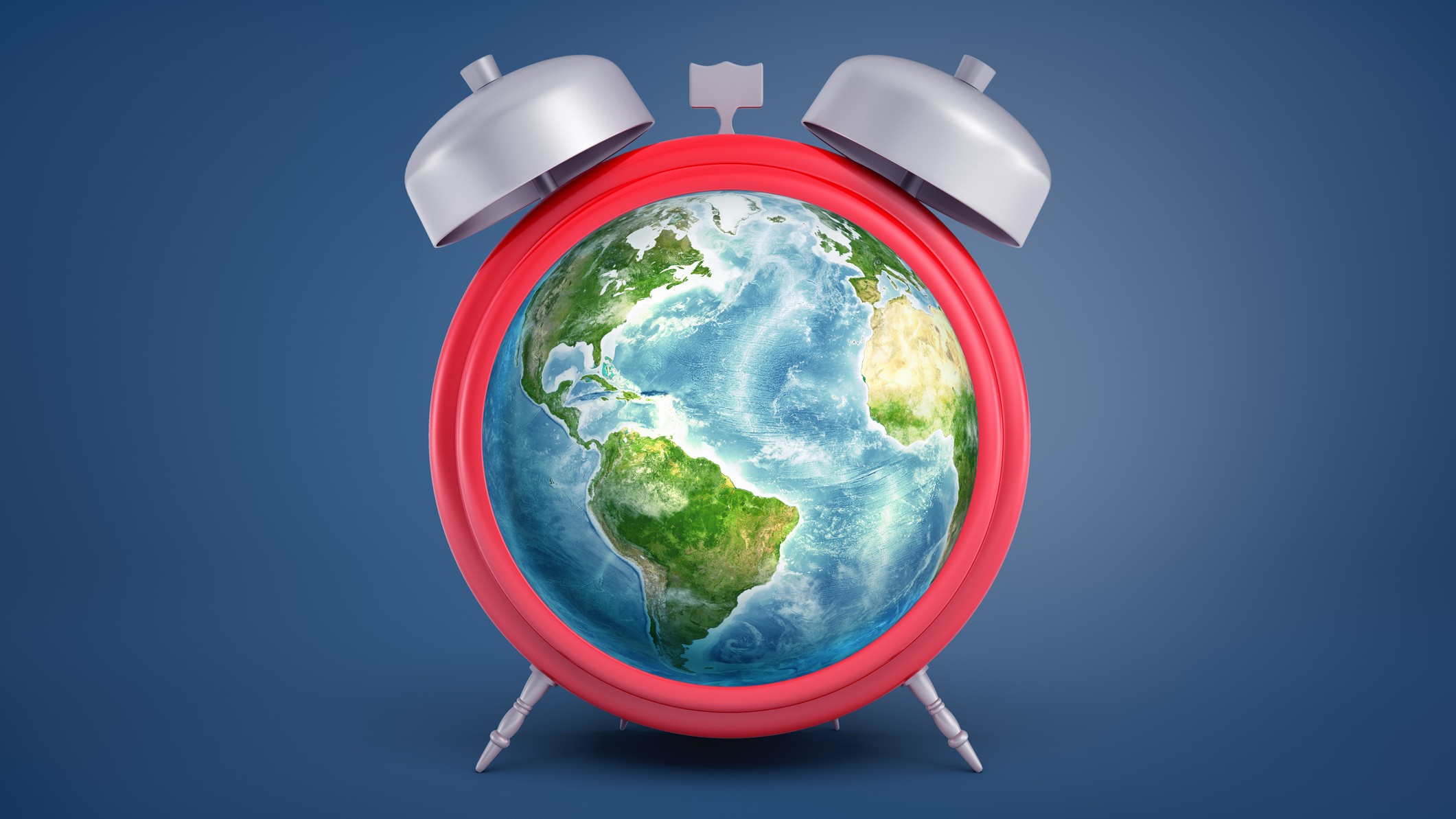Earth is spinning so fast that global timekeepers are considering something that’s never been done before: adding a negative leap second.
So far this year, July 9 and July 22 have been unusually short — by about 1.3 and 1.4 milliseconds, respectively. However, Aug. 5 is expected to be even shorter, losing roughly 1.5 milliseconds, according to timeanddate.com.
This follows a trend that has been observed since 2020. “We now have slightly shorter days than in the last 50 years,” Dirk Piester, head of Time Dissemination Group 4.42 at Germany’s national meteorology institute, previously told Live Science.
Why is Earth spinning faster?
A day on Earth lasts roughly 86,400 seconds, or 24 hours — the time it takes for the planet to fully rotate on its axis. But exactly how long it takes to perform one full rotation depends on many factors, including the positions of the sun and the moon, and Earth’s gravitational field.
On Aug. 5, the moon will be at its farthest from the equator, which changes the impact of its gravitational pull on Earth’s rotation — in this case, speeding it up.
Related: Earth just had a freakishly short day, but the fastest day of the year is yet to come
Over the past few billion years, Earth’s rotation has been slowing down, which scientists think is largely due to the gradual drift of the moon away from our planet. However, since 2020, the planet has been spinning ever so slightly faster.
We are only talking a couple of milliseconds, which for most of us is totally imperceptible. However, for computers, GPS, banking systems, large telescopes and electricity networks around the world that rely on incredibly accurate synchronization to operate, every millisecond counts.
These measurements are synchronized to a global reference time called Coordinated Universal Time (UTC). This time is based on over 400 atomic clocks around the world, which calculate time on a scale of a billionth of a second (nanoseconds). Because of irregularities in Earth’s rotation, UTC is largely independent of day length.
Usually, variations in Earth’s rotation cancel each other out. But over time, a millisecond here and there starts to add up. And when this happens, global timekeepers at the International Earth Rotation and Reference Systems Service (IERS) — the organization responsible for maintaining global time and reference frame standards — add a “leap second.”
What is a leap second?
Just like leap years, leap seconds get added to clocks to make up for differences in astronomical time, based on Earth‘s rotation, and UTC, based on atomic clocks.
The leap second was first introduced in 1972 and was added only when needed. However, technology has progressed a long way since then, and leap seconds can cause all sorts of problems when it comes to synchronizing precise instrumentation and computers.
Patrizia Tavella, director of the International Bureau of Weights and Measures (BIPM)’s time department, previously told Live Science that leap seconds often cause failures and anomalies in computing systems.
Tavella pointed to the aviation industry, which relies on extremely accurate timekeeping to schedule flight routes around the world. However, different computing networks in different countries have their own methods to add in extra leap seconds. “Because of the leap second, airlines have had issues with scheduling flights due to a difference in time,” Tavella said.
As a result, in 2022 an international group of scientists and government agencies voted to retire the leap second by 2035.
Do we need a ‘negative leap second’?
With Earth spinning faster, some scientists are wondering if a negative leap second is needed.
A negative leap second essentially involves removing a second from UTC if astronomical time gets ahead of UTC’s atomic time, Judah Levine, a fellow of the National Institute of Standards and Technology (NIST) and a physics professor at the University of Colorado, told Live Science in an email.
Levine believes the existing leap second system has always been a problem, and that the introduction of a negative leap second will raise even more issues.
“The primary concern about a negative leap second is that it has never happened before, and the software needed to implement it has never been tested,” he said. “There are continuing problems with the insertion of positive leap seconds even after 50 years, and this increases the concerns about the errors and problems of a negative leap second.”
Darryl Veitch, a professor at the University of Technology who studies computer networking, including clock synchronization, told Live Science that he didn’t think a negative leap second was a good idea either.
“Experience has shown that it is surprisingly difficult to get even +ve leap seconds working properly, despite decades of experience, so a -ve leap second brings higher risks, and meanwhile the potential impacts on our networked society continue to increase in scope,” he said.
Will we see a negative leap second by 2035?
So while a negative leap second is currently unlikely to happen this year, could it happen in the near future?
“The best estimate is that the probability of a negative leap second is about 30% within the next decade or so,” Levine said.
This will depend on a number of factors. For one, the leap second might get abolished. Secondly, while we have seen an acceleration in Earth’s rotation in recent years, climate change might actually cause it to slow down as a result of melting ice changing the distribution of water around our planet.
However, Veitch said that, despite recent measurements, the long-term trend for Earth’s rotation is for it to slow down. “What we have been experiencing recently may well be short lived, however it is very hard to say exactly how long “short” is — it could stretch to decades as climate change induced changes play out for example,” he said.
